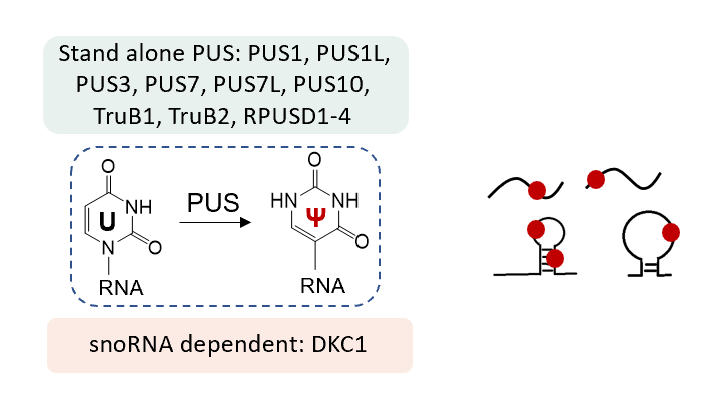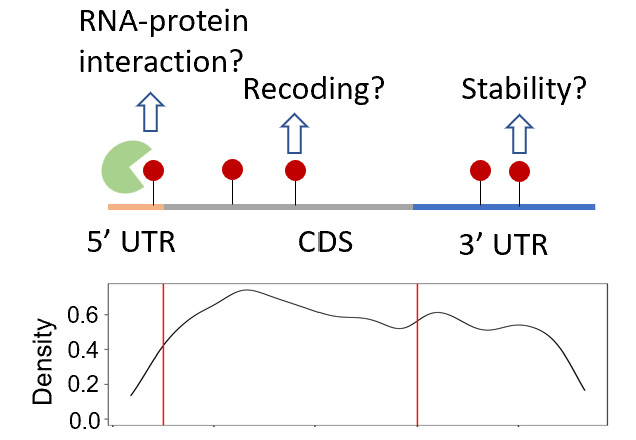RNA, which conveys genetic information from DNA to protein, is heavily modified with over 170 types of chemical marks. These modifications significantly enhance the diversity and complexity of RNA molecules, enabling them to perform various cellular roles. Pseudouridine is one of the most abundant modified nucleotides in RNA and is found in various types of RNA, including tRNA, rRNA, mRNA, and non-coding RNAs. It is catalyzed by either standalone enzymes or H/ACA snoRNA-dependent RNP complexes. There are 13 pseudouridine synthases in human, each with different specificities. Pseudouridine synthases are linked to human diseases such as neurodevelopmental disorders, mitochondrial myopathy and sideroblastic anemia (MLASA), dyskeratosis congenita, and various cancers. We aim to leverage existing tools and develop new ones to address the following questions regarding pseudouridine and other modifications:
1. Biogenesis of the Pseudouridine Modification
Why do cells require such a diverse array of writing machinery for a single type of modification? What are the specific substrates for each of the 13 writer proteins within the cells? How do these writer proteins recognize their respective substrates? Which snoRNAs pseudouridylate which pseudouridine modifications in mRNA?

2. Function of Pseudouridine in Messenger RNA
What roles does pseudouridine play in messenger RNA, particularly in the non-coding regions and at sense codons? Are there any reader proteins involved in the function of pseudouridine? Can we further modulate the properties of the modified RNA?

3. Roles of RNA Modifications in Cellular Activities
How are RNA modifications spatially and temporally regulated during neuronal cell development? How do modifications respond to immune stimulation, and how does this process contribute to the cellular defense mechanism during viral infection?